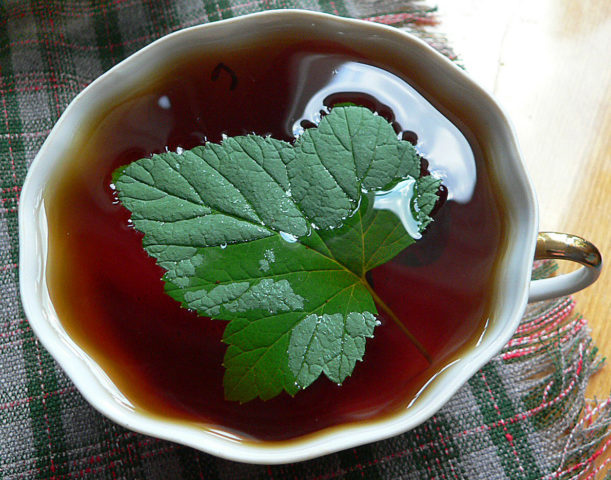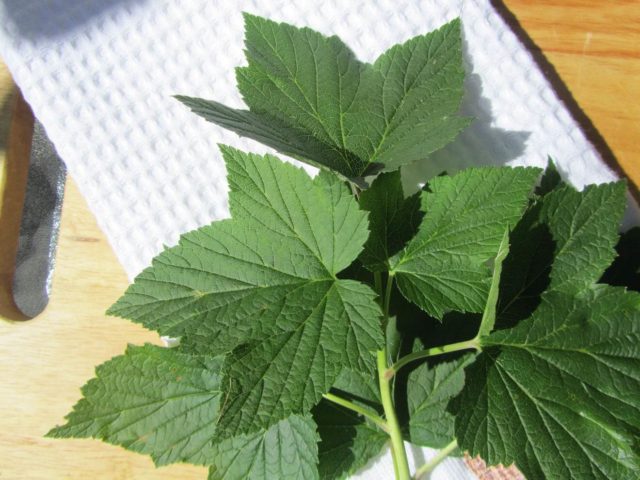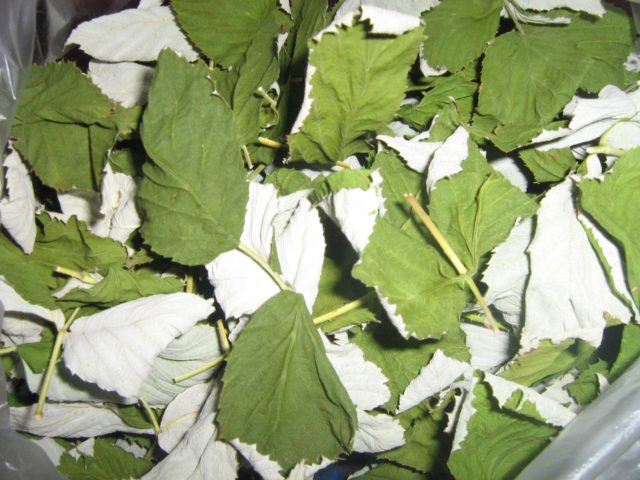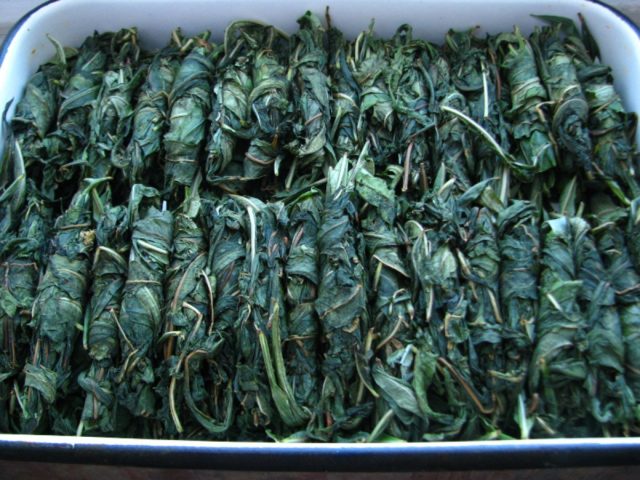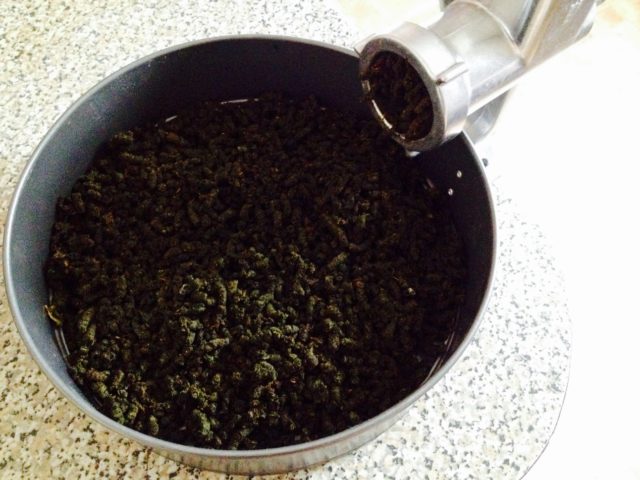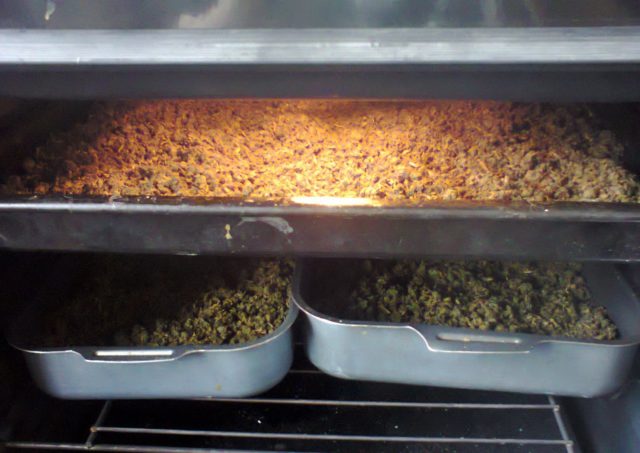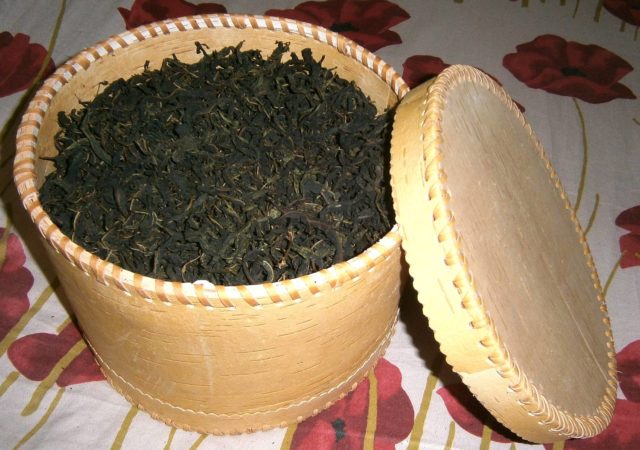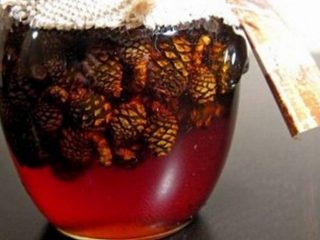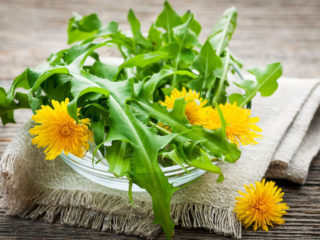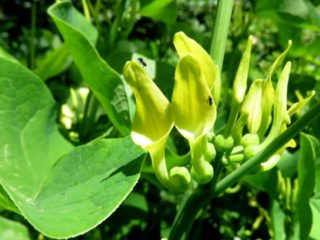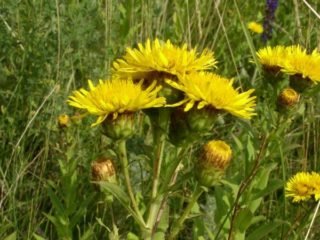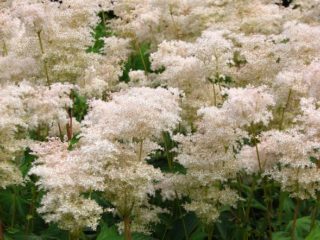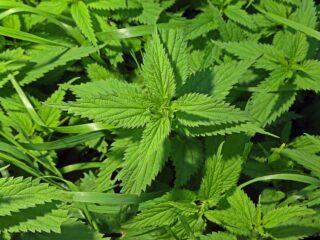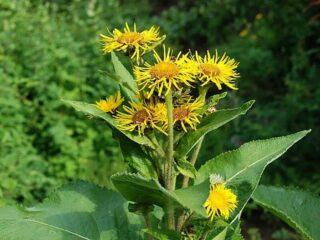Content
Fermentation of currant leaves is one of the ways to obtain high-quality raw materials for brewing a drink that is beneficial to the body. The purpose of the procedure is to convert the insoluble tissues of the leaf blades into soluble ones, which will allow the body to easily absorb them.
Is it possible to ferment currant leaves?
When choosing a plant for tea, you need to focus on the presence of tannins (tannins) in it. Their presence is a guarantee of obtaining tasty raw materials for the drink. They are found in strawberries, cherries, and currants.
The maximum amount of tannins is contained in young leaf blades; in a coarsened leaf, the supply of these substances is much lower.
There are no specific varieties of currants recommended for the fermentation procedure, but black-fruited representatives of the crop are most often used.
Beneficial properties of fermented currant leaves
Any plant has a number of substances that can help the human body function fully. Fermentation of currant leaves for tea allows you to take advantage of the following properties of the crop:
- strengthening the immune system;
- reduction of signs of toxicosis;
- elimination of insomnia;
- supporting kidney and urinary tract function in various pathological conditions;
- normalization of digestion.
Currant tea is often prescribed to pregnant women during colds, when other treatment methods are inappropriate.
Preparing currant leaves for fermentation
Neglecting the rules for procuring raw materials and violating the stages of its processing significantly reduces the taste of the finished product.
Initially, for fermentation, you need to collect the required amount of currant leaf. To do this, in dry weather, in the morning, you should tear off the leaf plates located in the shade. If they are dirty, you need to wash them under running water. If there are no obvious signs of contamination, currant leaves should not be rinsed: they contain bacteria that favorably contribute to the fermentation process.
The selected leaf blade must be intact, even green in color, without signs of damage: red or yellow spots, or other external defects.
Collecting raw materials for fermentation is possible throughout the summer season: tea from spring leaves turns out more delicate, with a pleasant subtle aroma. The maximum amount of useful substances accumulates in the leaf blades when the plant begins to bear fruit.Autumn harvesting is ineffective: the fermentation process is more difficult, and the raw materials require longer processing.
How to ferment currant leaves at home
Freshly harvested leaf blades must be withered. This procedure makes it possible to facilitate further stages of fermentation of currant leaves.
The collected currant raw materials for fermentation should be spread on a linen towel or cotton fabric in a layer of 3-5 cm and left indoors. It is necessary to periodically stir the sheets so that they dry evenly. Avoid exposing them to sunlight.
The process takes up to 12 hours and varies depending on the humidity and temperature in the room. On warm days, the plant withers faster; during the rainy season, the fermentation stage lasts several days. The optimal parameters for the procedure are room temperature + 20-24 ° C and air humidity up to 70%.
To determine the end of the fermentation stage, it is enough to fold the currant leaf in half: if there is a “crunch”, it is necessary to continue withering the raw material. A leaf plate ready for fermentation should not straighten when compressed into a ball.
The further stage of fermentation of blackcurrant leaves is freezing. It is intended to facilitate subsequent processing. With a sharp drop in temperature, the structure of cell membranes is disrupted, which leads to the release of juice.
To do this, the leaf plates are placed in a bag in the freezer for 1-2 days.After the time has passed, they should be removed and spread out in an even layer until completely defrosted.
The goal of the next stage of processing is to destroy the structure of the leaf so that it releases the maximum amount of juice with beneficial substances. There are several methods for this stage of the procedure.
Rolling sheets manually
Several leaf plates, 7-10 pieces, are carefully rolled between the palms into a “roll” until the mass darkens from the released juice. Subsequently, the rolled raw material is cut into a tube, which makes it possible to obtain small-leaf tea.
Kneading and crumpling currant leaves
Externally, the procedure is similar to kneading dough: the leaves are crushed in a deep bowl with squeezing movements for 15-20 minutes until the juice necessary for further fermentation appears.
The use of this method allows us to subsequently obtain large-leaf currant tea.
Twisting in a meat grinder
For the procedure, you can use both mechanical action and an electrical device. The sheet plates must be passed through a large grid. From the crushed mass you can get granulated tea.
The taste and quality of the finished product depend on whether currant leaves are properly fermented. It is important to ensure the required temperature and humidity during the procedure.
To do this, the treated leaves are placed in 7-10 layers in a plastic container, covered with linen cloth on top, and a heavy object is placed on it, which will replace the press.
After this, the dishes must be moved to a warm place and checked periodically to ensure that the material does not dry out. To do this, it is moistened with water.
The duration of the process is individual: it is recommended to maintain the room temperature at + 22-26 °C. At lower rates, fermentation of the currant leaf slows down or stops. Excessively high temperatures speed up the process, but the quality of the finished tea deteriorates significantly.
Drying tea
If the raw material was rolled or kneaded before fermenting the currant leaf, it must be cut into pieces up to 0.5 cm in order to obtain a leaf type of tea. A plant chopped with a meat grinder does not need further processing.
The fermented mass should be spread on baking sheets pre-lined with baking paper.
Drying is carried out in a slightly open oven for 1-1.5 hours, with uniform heating at 100 ° C, then the temperature must be reduced to 50-60 ° C and the procedure must be continued until the moisture has completely evaporated. It is important to mix the raw materials regularly. The finished currant leaf will break when pressed, rather than being crushed.
At the end of the process, the tea must be removed from the oven, cooled and poured into fabric bags.
With proper fermentation of currant leaves and their drying, the granules have a faint odor and make a rustling sound if the fabric bag is shaken.The presence of a strong aroma is a sign of poorly prepared food: there is a high risk that the tea leaves will become moldy.
Applications of fermented currant leaf
The brewing procedure has no special features: the kettle must be thoroughly washed, then fermented currant leaf should be poured into it, taking into account that 1-2 tsp is needed for 1 glass of water. raw materials.
Brew the fermented tea leaves with boiling water, leave to steep for 10-20 minutes, after covering with a warm cloth. Before serving, pour some of the tea leaves into glasses and add hot water.
Terms and conditions of storage
It is recommended to store fermented currant leaves in glass or plastic containers. Birch bark boxes are suitable as containers. Packaged tea must be moved to a dark, dry room. It is recommended to renew the supply of currant leaves annually.
Conclusion
Fermentation of currant leaves is a fascinating process that requires patience, allowing you to obtain a guaranteed quality product. Brewed tea is used not only as a tasty but also healthy drink.
